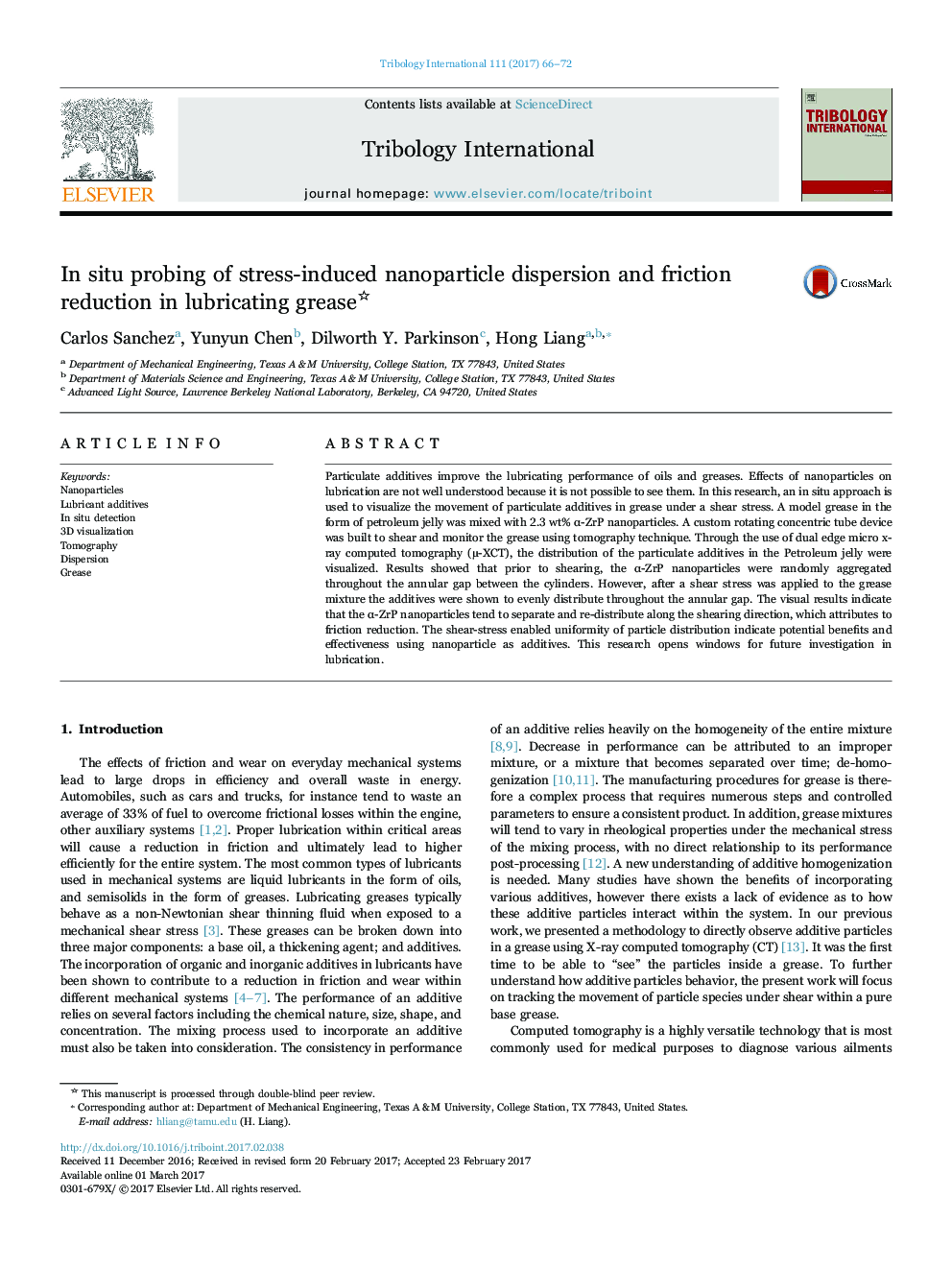| Article ID | Journal | Published Year | Pages | File Type |
|---|---|---|---|---|
| 4986037 | Tribology International | 2017 | 7 Pages |
Abstract
Particulate additives improve the lubricating performance of oils and greases. Effects of nanoparticles on lubrication are not well understood because it is not possible to see them. In this research, an in situ approach is used to visualize the movement of particulate additives in grease under a shear stress. A model grease in the form of petroleum jelly was mixed with 2.3 wt% α-ZrP nanoparticles. A custom rotating concentric tube device was built to shear and monitor the grease using tomography technique. Through the use of dual edge micro x-ray computed tomography (µ-XCT), the distribution of the particulate additives in the Petroleum jelly were visualized. Results showed that prior to shearing, the α-ZrP nanoparticles were randomly aggregated throughout the annular gap between the cylinders. However, after a shear stress was applied to the grease mixture the additives were shown to evenly distribute throughout the annular gap. The visual results indicate that the α-ZrP nanoparticles tend to separate and re-distribute along the shearing direction, which attributes to friction reduction. The shear-stress enabled uniformity of particle distribution indicate potential benefits and effectiveness using nanoparticle as additives. This research opens windows for future investigation in lubrication.
Keywords
Related Topics
Physical Sciences and Engineering
Chemical Engineering
Colloid and Surface Chemistry
Authors
Carlos Sanchez, Yunyun Chen, Dilworth Y. Parkinson, Hong Liang,
